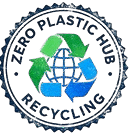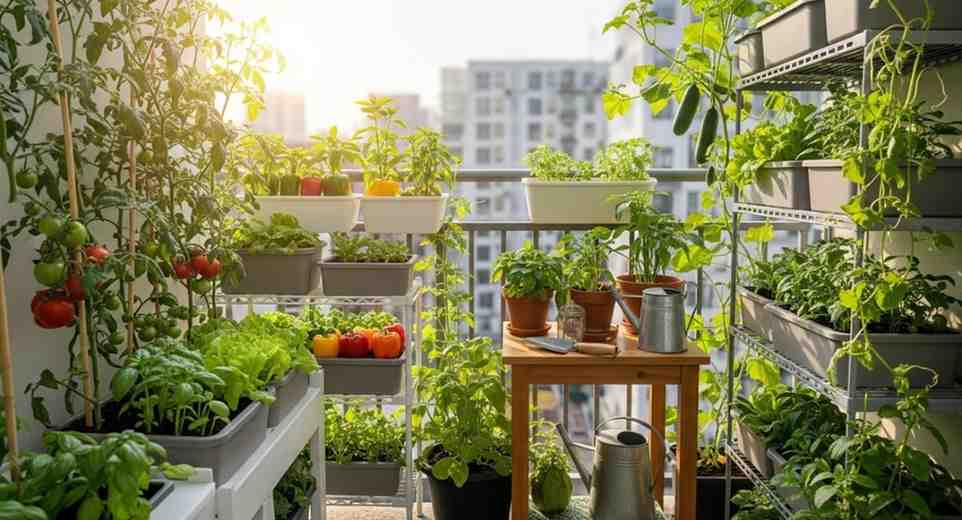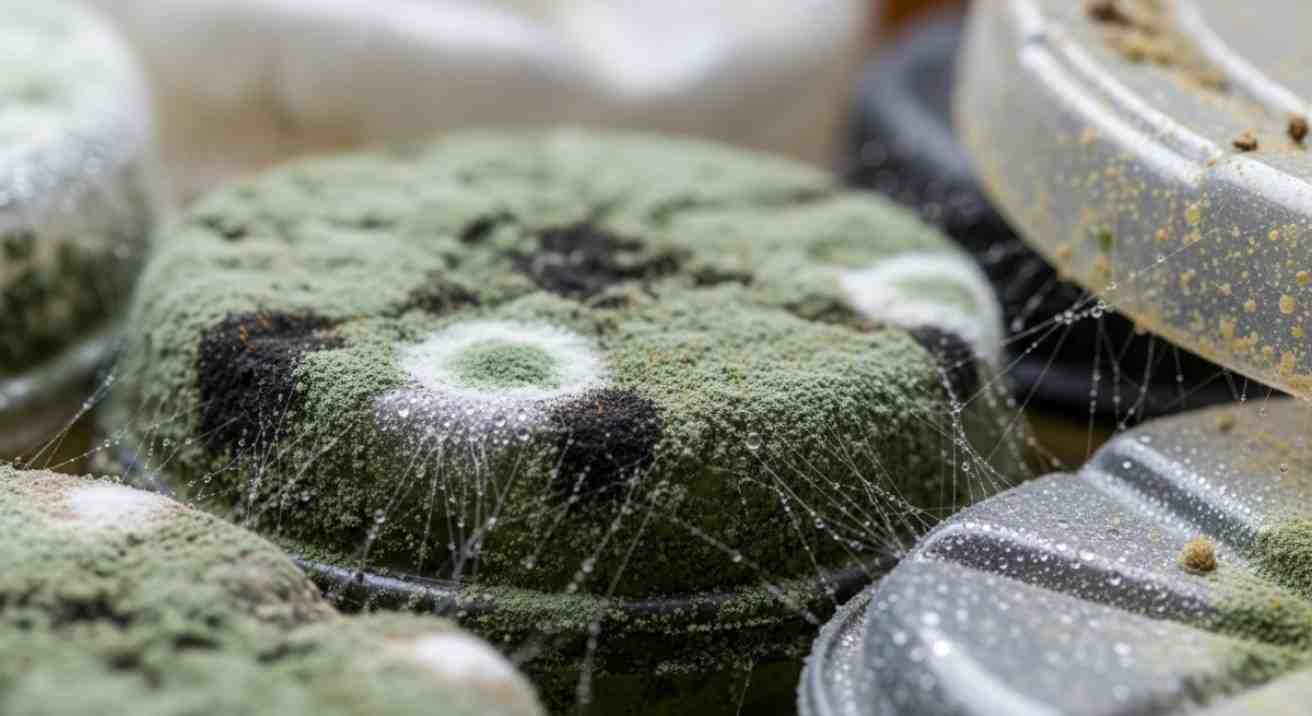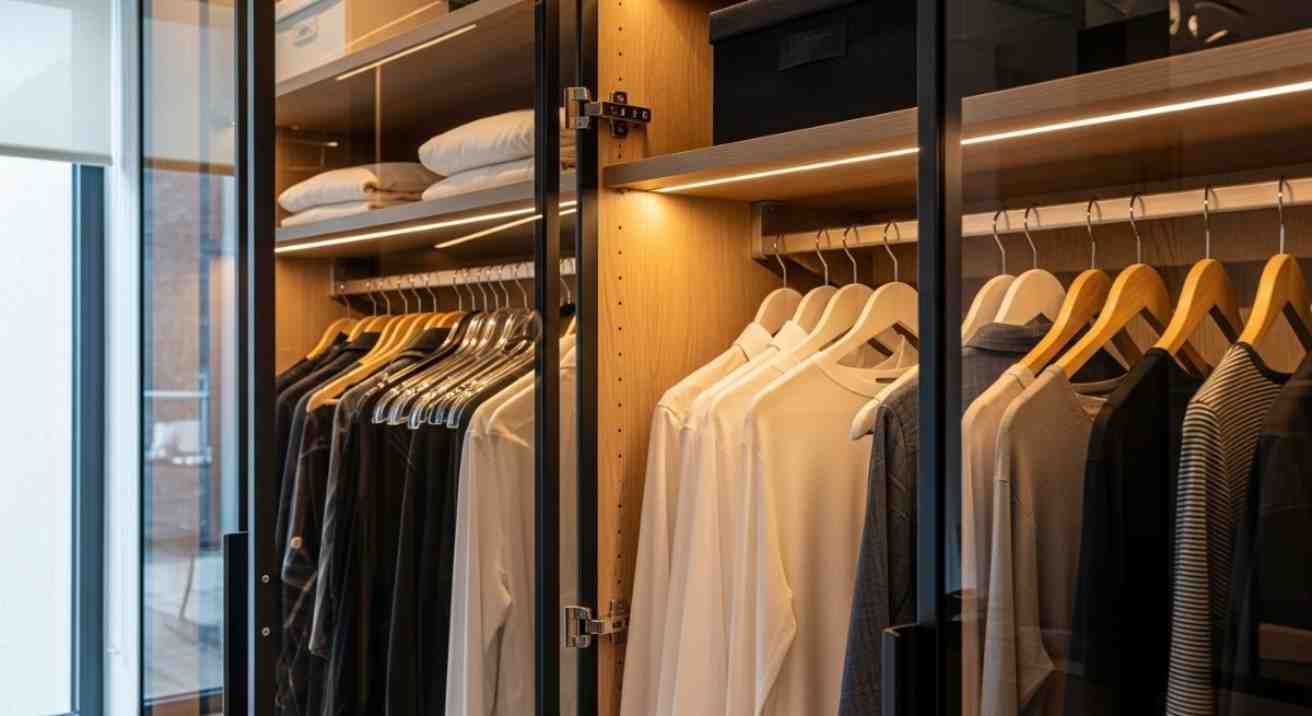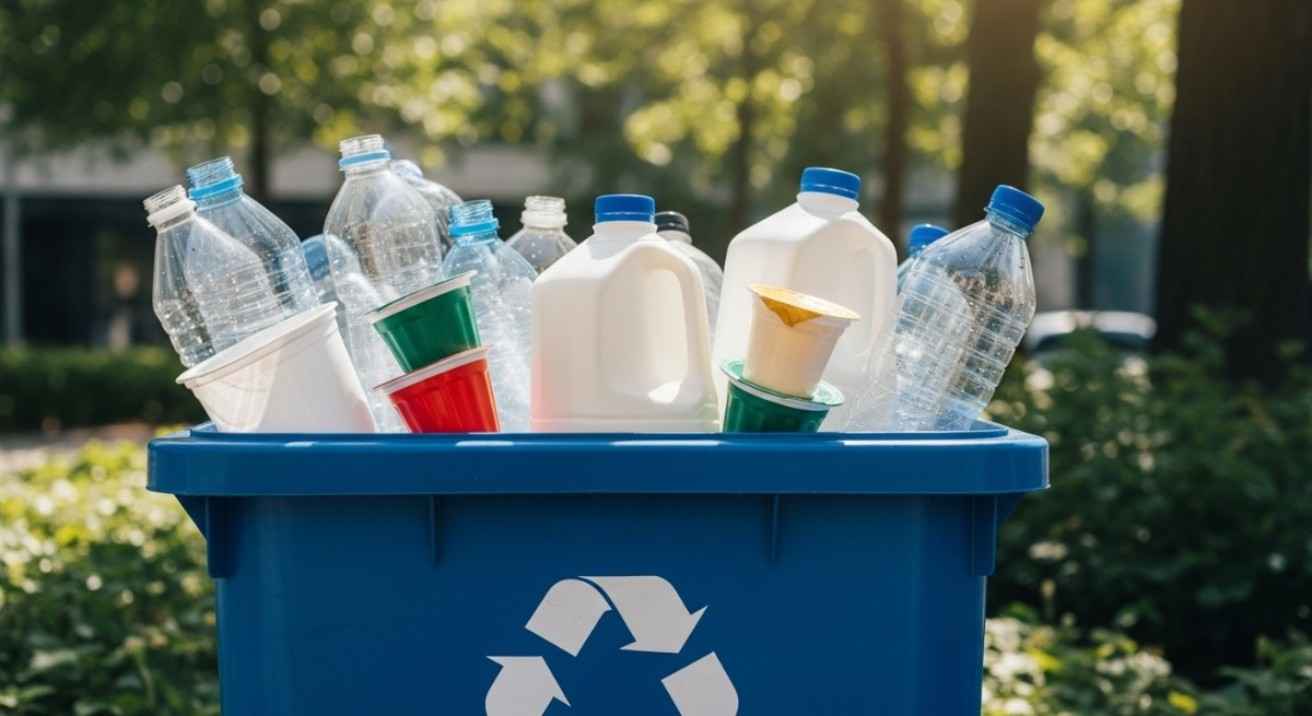Yes, is it safe to plant vegetables in plastic containers? It is safe if you choose food-safe plastics like HDPE, LDPE, or PP. These plastics do not leak harmful chemicals, so you can grow fresh and healthy vegetables at home with confidence.
Best Practices for Safe Container Gardening
| Practice | Why It Matters | Tips |
|---|---|---|
| Pick the right plastics | Food-safe plastics reduce risks of toxins. | Use HDPE (#2), LDPE (#4), or PP (#5) for vegetable gardening. |
| Avoid unsafe plastics | Some plastics release harmful chemicals. | Stay away from PVC (#3) and Polystyrene (#6). |
| Check container condition | Damaged pots break down faster. | Replace cracked, brittle, or faded planters regularly. |
| Protect from heat & sunlight | Heat increases plastic wear and leaching. | Place pots in partial shade or use covers. |
| Use organic soil & compost | Builds strong, safe, and nutrient-rich plants. | Choose organic soil mixes for food-safe gardening. |
| Add liners or grow bags | Extra layer reduces direct contact with plastic. | Line containers for eco-friendly gardening safety. |
| Water carefully | Too much moisture weakens plastic and roots. | Avoid overwatering; use drainage holes. |
| Rotate crops | Keeps soil healthy and prevents pests. | Change vegetables each season for better yields. |
| Clean before reuse | Removes residues and harmful buildup. | Wash with mild soap and water before replanting. |
What Plastics Are Common in Gardening
When asking is it safe to plant vegetables in plastic containers, the answer depends on the type of plastic you use. Not all plastics are safe for growing food. To know which ones are safe, check the recycling code printed at the bottom of the container.
- #1 PET (Polyethylene Terephthalate): Common in water and soda bottles. Safe for short use but not for long-term gardening because it can break down in sunlight.
- #2 HDPE (High-Density Polyethylene): Strong, durable, and food grade plastic. Often used in buckets and large garden pots. One of the safest choices for vegetable gardening.
- #4 LDPE (Low-Density Polyethylene): Flexible plastic, found in grow bags. Safe to grow food crops like herbs and leafy greens.
- #5 PP (Polypropylene): Lightweight and heat-resistant. A very safe option for plastic container gardening.
- #3 PVC and #6 Polystyrene: Avoid these plastics. They can leach harmful chemicals into the soil.
Tip: If you want safe, long-lasting plastic pots for vegetables, stick with #2, #4, or #5. These are considered food safe planters and allow your plants to grow without risk.
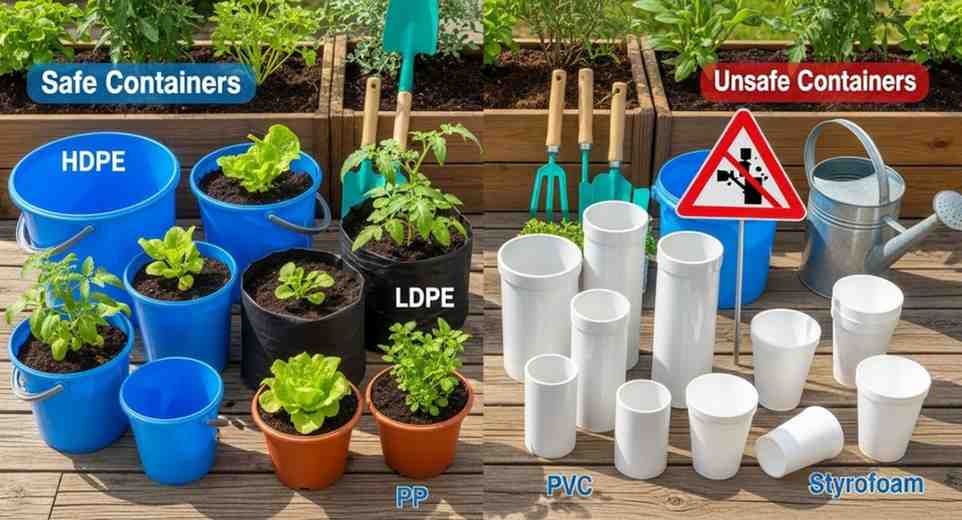
Do Plastics Leach Chemicals?
- Some plastics may release very small amounts of chemicals, but the risk depends on the type of plastic and how you use it.
- Safe plastics like HDPE (#2), LDPE (#4), and PP (#5) are food grade and rarely leach harmful substances.
- Unsafe plastics such as PVC (#3) or polystyrene (#6) can release chemicals like BPA, phthalates, and microplastics.
- Heat, sunlight, and cracked containers increase the chances of plastic leaching.
- Most chemicals stay in the soil and don’t reach the edible parts of vegetables. Fruiting plants like tomatoes and peppers are especially safe.
- Root crops may have slightly more exposure, but when grown in food-safe planters, the risk is still very low.
Alternatives to Plastic Containers
| Clay Pots (Terracotta) | Natural, breathable, and safe for vegetables. Roots get air easily. | Can dry out quickly, so water plants more often. |
| Ceramic Pots | Durable, attractive, and hold moisture well. Great for eco-friendly gardening. | Heavy and breakable if dropped. |
| Metal Containers | Strong, reusable, and long-lasting. Good for sustainable gardening. | Can heat up in the sun → use a liner or grow bag. |
| Wooden Planters | Eco-friendly and biodegradable. Safe for growing vegetables naturally. | Use untreated, rot-resistant wood like cedar. |
| Fabric Grow Bags | Lightweight, breathable, and promote root health. Easy to move around. | May need extra support for larger plants. |
| Concrete or Stone Planters | Very durable and safe for edible gardening. Long-lasting choice. | Heavy and not easy to move. |
| Biodegradable Pots (Coconut coir, peat, rice husk) | Compostable and zero-waste option. Perfect for sustainable gardening. | Best for seedlings and small plants. |
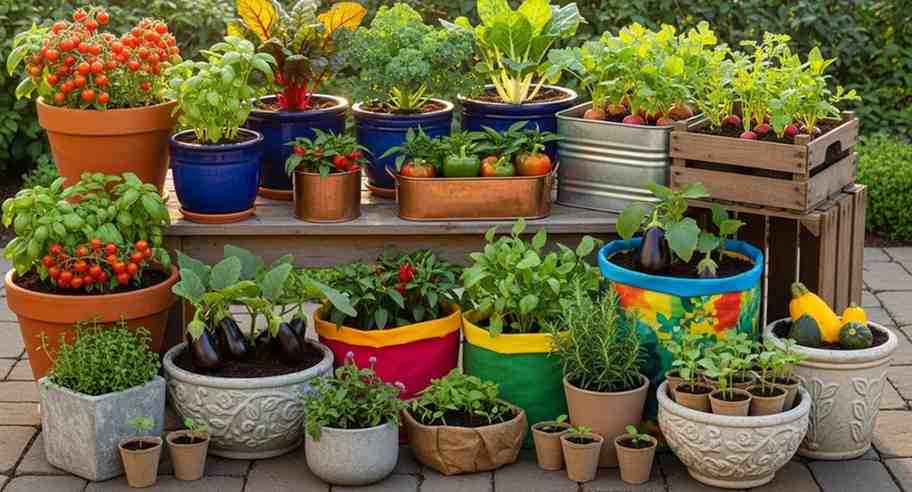
Food Safety Concerns for Edible Gardening
- Plastic containers are safe for growing vegetables if you choose the right type. Food-grade plastics like HDPE (#2), LDPE (#4), and PP (#5) are already used in food packaging, so they are safe for container gardening.
- Avoid non-food grade plastics such as PVC (#3) and Polystyrene (#6), as these may release harmful chemicals into the soil.
- Fruiting vegetables like tomatoes, peppers, and beans are very safe to grow in plastic pots, because they don’t absorb toxins easily.
- Root crops such as carrots, radishes, and potatoes touch the soil more directly, so it’s better to use food-safe planters for them.
- Heat, strong sunlight, and old, cracked pots can increase the chances of plastic toxins in soil.
- Adding liners or grow bags inside plastic containers gives extra protection and keeps your vegetables safer.
- Washing vegetables well after harvest removes any surface residue, making them completely safe to eat.
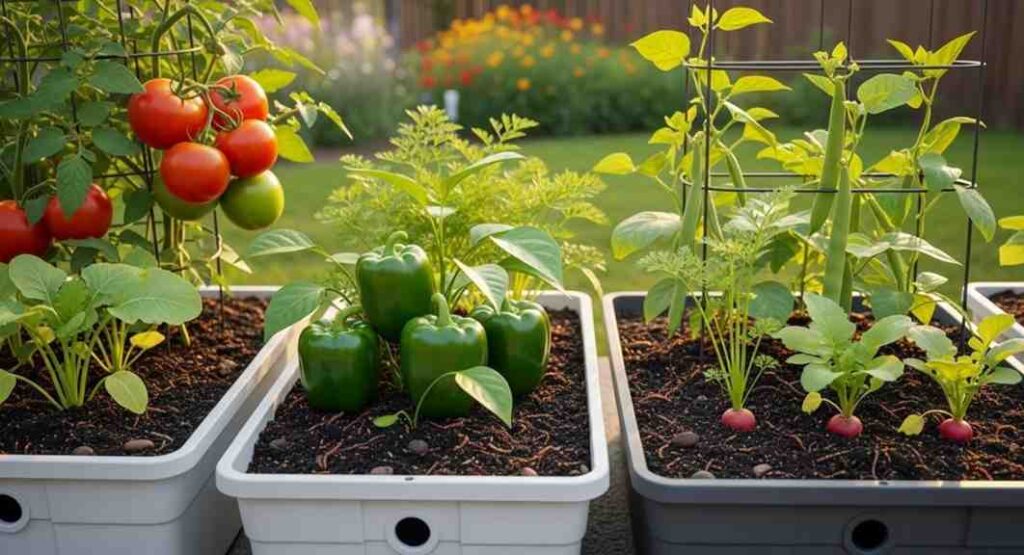
Risks of Using Plastic Containers
- Chemical Leaching – Some plastics may release toxins like BPA or phthalates into the soil, especially in heat or direct sunlight.
- Microplastics in Soil – Old and brittle plastic pots can break down, leaving microplastics in gardening soil that may harm soil health.
- Unsafe Plastics – PVC (#3) and Polystyrene (#6) carry higher risks of chemical release, making them unsafe for food gardening.
- Heat Sensitivity – Plastic planters heat up quickly, which can stress or damage plant roots.
- Durability Issues – Unlike clay or metal, plastic containers wear out faster, often cracking or fading after a few seasons.
- Food Safety Risks – While most vegetables are safe, root crops like carrots or radishes may face slightly more exposure in unsafe plastics.
- Environmental Concerns – Old plastic pots often end up as plastic waste, adding to landfill pollution.
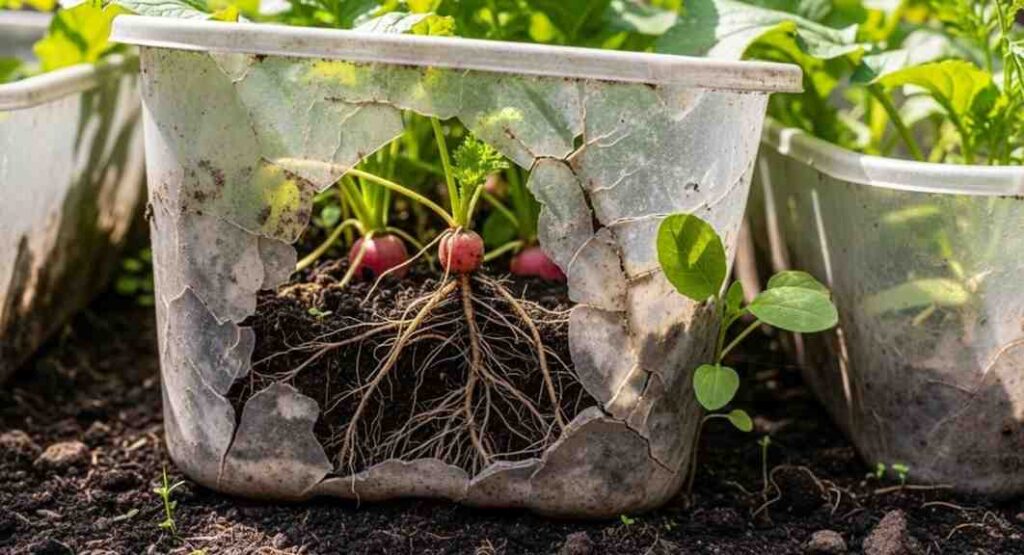
FAQs About Planting Vegetables in Plastic Containers
- Is it safe to grow vegetables in plastic containers?
Yes, it is safe if you use food-grade plastics like HDPE (#2), LDPE (#4), and PP (#5). These are the same materials used in food packaging, so they are trusted for container gardening safety. - Which plastics should I avoid for gardening?
Avoid unsafe plastics such as PVC (#3) and Polystyrene (#6). These materials can release harmful chemicals and are not safe for growing edible plants. - Can vegetables absorb toxins from plastic planters?
Most vegetables do not absorb toxins. Fruiting plants like tomatoes, peppers, and beans are very safe. Root crops (like carrots or radishes) touch the soil more closely, but if you use food-safe planters, the risk stays very low. - How can I make plastic container gardening safer?
- Use liners or fabric grow bags inside your pots.
- Replace cracked or old containers on time.
- Keep pots out of direct sunlight to reduce leaching.
- Wash vegetables well before eating.
- What are eco-friendly alternatives to plastic containers?
You can try clay pots, ceramic planters, wooden boxes, fabric grow bags, or biodegradable pots made from coconut coir or peat. These are great for eco-friendly gardening. - Do plastic containers affect soil quality?
Low-quality plastics can break down and leave microplastics in soil over time. Choosing high-quality, food-safe containers or using liners keeps your gardening soil healthy.
Conclusion: Is It Safe to Plant Vegetables in Plastic Containers?
So, is it safe to plant vegetables in plastic containers?
Yes, it can be safe if you use the right type of plastic for gardening. Choosing food-safe plastics like HDPE, LDPE, and PP makes your vegetable gardening healthy and safe.
Stay away from harmful plastics such as PVC and Styrofoam, because they may release toxic chemicals into the soil. For extra protection, you can line your plastic containers, keep them in shaded areas, and replace old or cracked pots on time.
With these small steps, you can enjoy safe container gardening at home. By picking eco-friendly alternatives or food-safe plastics, you’ll grow fresh, chemical-free vegetables and feel confident about what you’re eating.
